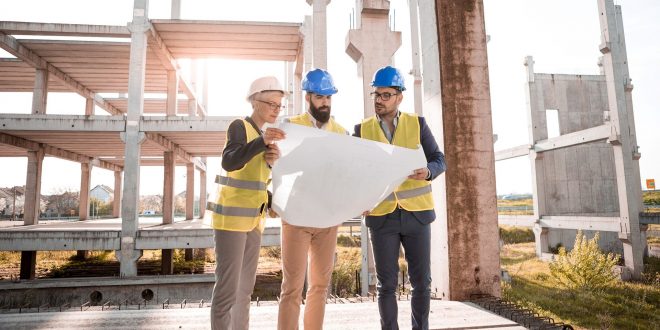Why Green Initiatives for Industrial Construction?
Green initiatives are on the rise. A large part of the movement includes green building practices in which companies approach new construction with a combination of protecting the environment and our natural resources with cutting energy costs and saving clients money.
One internationally-conducted survey from 2018 had about half of respondents say they fully expect 60% or more of new construction by 2021 to be green projects.
One might wonder why.
There are several reasons.
Green building delivers real benefits for building owners, occupants, and the general public by reducing energy use, improving indoor air quality, and cutting operating costs. “Going green” provides benefits for public health, the environment, and the bottom line.
Reduced energy use
With the rise in demand for green building materials, costs have gone down. Because of this, more and more green construction can focus on ways to efficiently control temperature and waste, leading to significant savings for the building owner and occupants, as well as conserving natural resources that would have been otherwise used in less efficient construction.
Prefabricated materials make for more efficient construction
Traditionally, a lot of industrial construction materials get cut and prepared outdoors, and the results are not always accurate. Metal sheeting, for example, expands or contracts depending on the temperature and other environmental factors, so what’s been cut to one size may not be the perfect fit later in the day.
Green building takes advantage of prefabricated building materials. By doing so, sizing becomes more accurate, and there is a lot less waste occurring. Materials are measured, cut, and prepared for delivery in a single, controlled environment.
Green building keeps safety in mind
Construction sites can be hazardous at times. Whether its potentially harmful chemicals getting on shoes and getting tracked all over the place—even home—or polluted water runoff posing a danger to the local water supply, green building practices take steps to mitigate these risks with runoff water control, water treatment procedures, or “walk-off mats” to help remove dirt, lead, or dangerous chemicals from footwear.
Recycling helps everyone
Multiple bins for different types of waste or debris are not new to construction sites. Green building approaches recycling differently. Instead of numerous bins requiring multiple services to take away, just one large container is used for everything and hauled off by one service, thus taking up less space and less road traffic.
Pickers separate the materials offsite for optimal recycling leading to up to 75% less landfill usage.
Taken a step further, green building also tries to use recycled or renewable building materials where and when possible.
Going green is a lot more than installing dual-flush toilets or low-flow faucets. Green buildings also mean green construction sites. Prefabrication, conserving resources, improving recycling, and making use of green materials acquisition are changing the way companies put up structures. Over time, owners and occupants will see the benefits not only in costs and energy savings but in positive publicity as well. Lowering waste and pollution serve everyone from owners to the community.
Green is the way to go.



